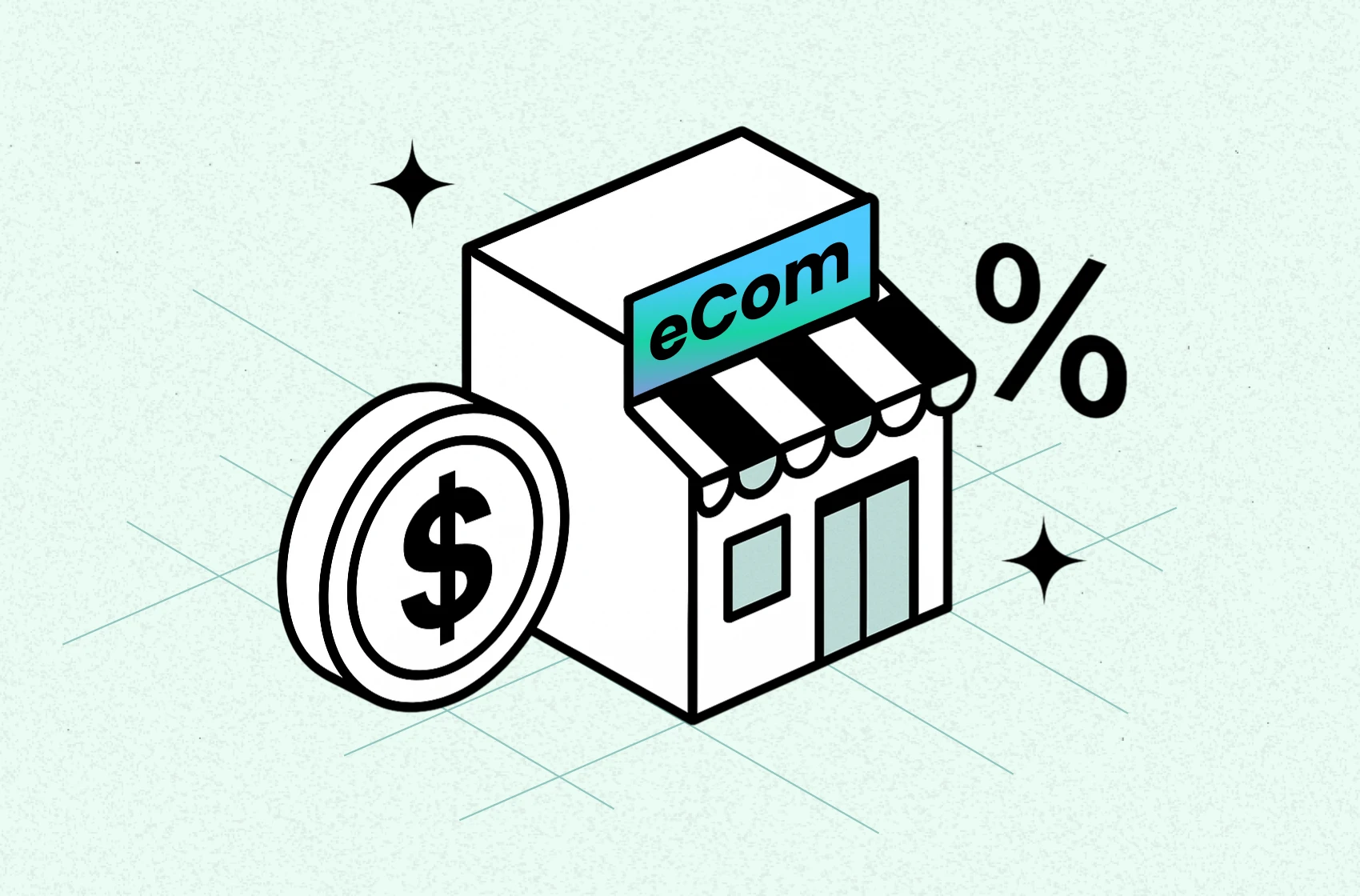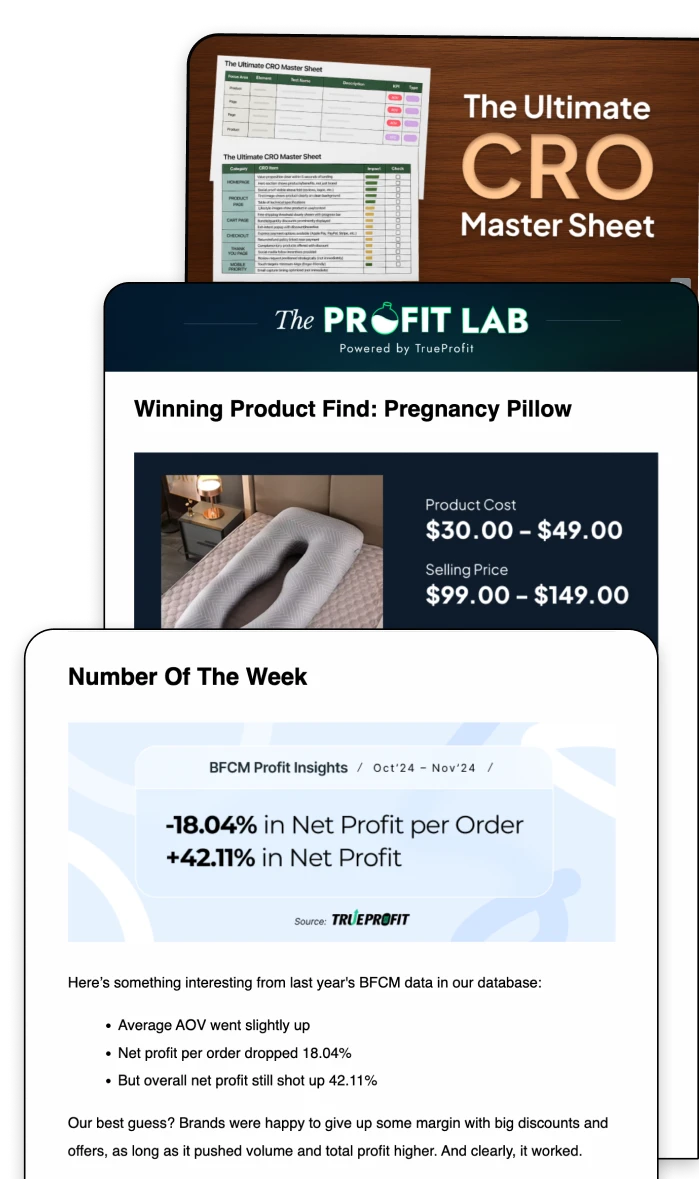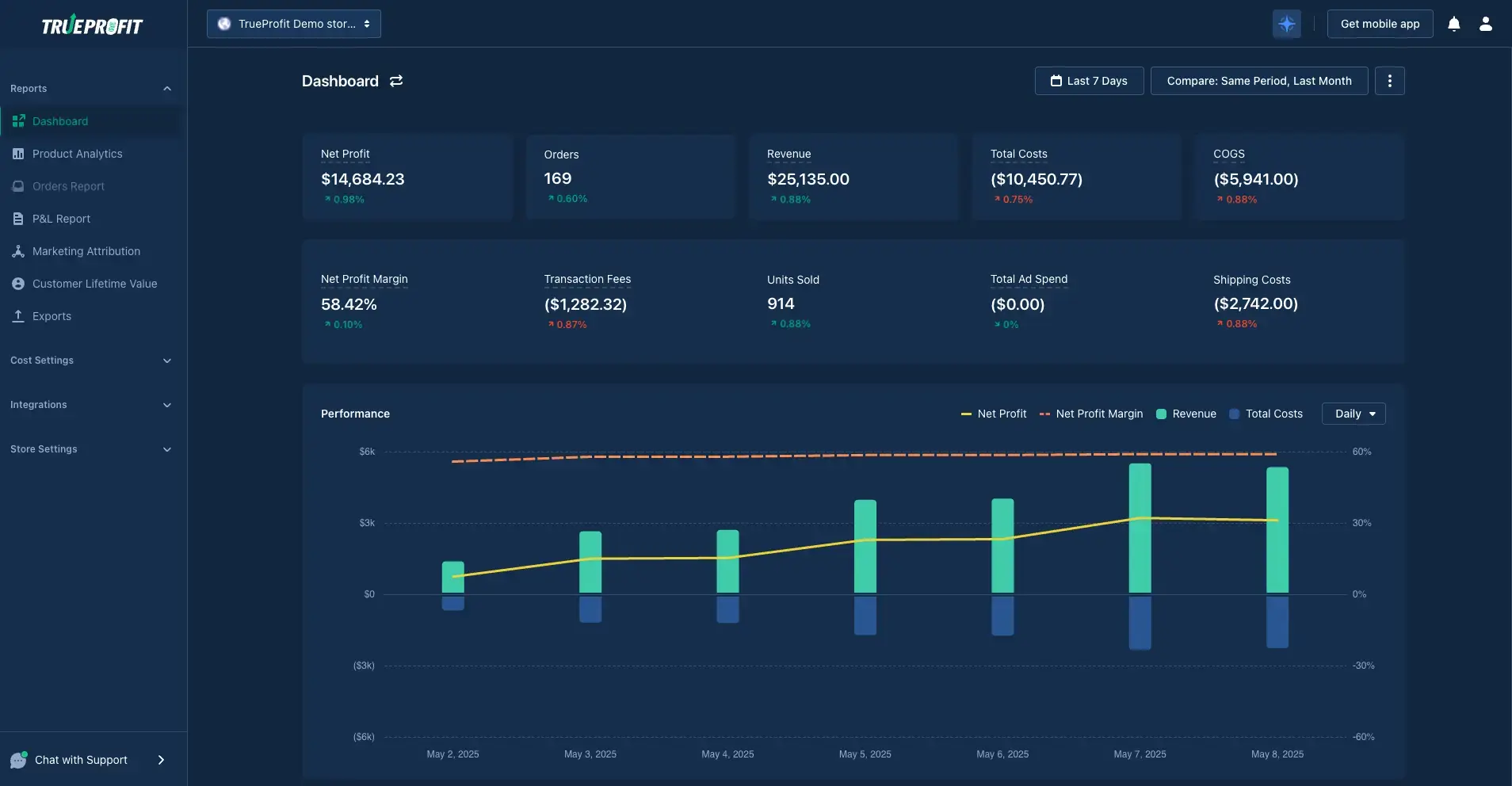What Is A Good Profit Margin For A Small Business? (2025)

Wondering what a good profit margin for a small business in 2025?
The short answer:
- A net profit margin of 10% is considered healthy, while anything above 20% is strong.
- For gross profit margin, 60%–80% is a solid range for small eCommerce stores.
But here’s the thing — “good” isn’t one-size-fits-all. Your ideal margin depends on what you sell, how you operate, and where your money goes.
In this guide, we’ll break down both gross and net profit margin benchmarks for 2025, explain what they really mean, and help you figure out how your numbers stack up. Let’s dive in.
What Is a Good Profit Margin for Small Business?
An NYU report puts the average U.S. net margin at 7.71% across industries.
Here’s the quick breakdown for 2025, down to net and gross profit margin level.
For net profit margin benchmark:
- 5% = Low but common when you’re just starting
- 10% = Healthy and sustainable
- 20%+ net profit margin = Strong. You’ve got healthy breathing room.
For gross profit margin benchmark, everything between 60-80% is good for small businesses.
That said, "good" isn’t one-size-fits-all.
Your ideal margin depends on what you sell, how you fulfill, and where your money goes.
Average Small Business Profit Margin by Industry
Some industries just have tighter margins. Here’s the ballpark:
Industry | Gross Profit Margin | Net Profit Margin |
|---|---|---|
Software (System & Apps) | 71.52% | 19.14% |
Software (Entertainment) | 63.43% | 20.35% |
Oil/Gas (Production) | 58.75% | 28.26% |
Healthcare Products | 55.64% | 8.19% |
Beverage (Soft Drinks) | 54.52% | 13.73% |
Beverage (Alcohol) | 45.25% | 8.59% |
Real Estate (General) | 46.70% | 16.91% |
Restaurant/Dining | 32.43% | 10.66% |
Retail (Distributors) | 32.34% | 7.55% |
Retail (General) | 30.86% | 3.09% |
Retail (Automotive) | 21.88% | 4.32% |
Business & Consumer Services | 33.50% | 5.45% |
Computer Services | 25.52% | 4.40% |
Information Services | 32.72% | 3.49% |
Packaging & Containers | 21.71% | 2.85% |
Advertising | 28.11% | 0.89% |
Engineering/Construction | 13.85% | 1.67% |
Food Wholesalers | 14.86% | 1.21% |
Farming/Agriculture | 16.49% | 7.12% |
Entertainment | 38.09% | -0.23% |
Insurance (General) | 33.93% | 8.88% |
Investments & Asset Management | 66.89% | 19.82% |
Transportation | 25.12% | 5.96% |
Remember to use those benchmarks as a reference point, if your numbers aren’t matching yet, still no reason to give up right now.
There are a lot of factors that affect your profit margin, and most of them are totally within your control. We’ll break them all out below.
Key Factors That Affect Profit Margins
If your profit margins feel tighter than expected, it could be due to shifts in four key metrics that directly impact your bottom line. Let’s break them down.
1. COGS (Cost of Goods Sold)
This includes product cost, manufacturing, shipping, and sometimes insurance.
Cost of goods sold is a big cost. If your COGS goes up (e.g., product + shipping cost jumps from $20 to $30), your profit shrinks unless you raise your prices.
2. Inventory
Let’s say you bulk-ordered 500 mugs and only sold 10 this month. That unsold inventory cost still sits with you.
It doesn’t hurt your margin directly yet, but it will if the mugs go out of style or you discount them to get rid of them.
3. Taxes
This cost hits after you’ve done all the hard work. If you don’t factor them in, your “profit” might look great on paper — until tax season cuts into it.
4. Net Profit vs. Revenue
Net profit, also known as the bottom line. It’s your total revenue minus all expenses — product costs, shipping, ads, software tools, fees, taxes, etc.
Revenue, more common, is how much money you bring in from selling your stuff — before you subtract anything.
Because profit margin = net profit ÷ revenue, so these two metrics will make or break your profit margin.
Here’s how it affects:
- If your net profit goes up and revenue stays the same → margin goes up.
- If your revenue goes up but net profit stays the same → margin goes down.
Imagine two stores:
Metrics | Store A | Store B |
|---|---|---|
Revenue | $1,000 | $1,000 |
Net Profit | $100 | $300 |
Net Profit Margin | 10% | 30% |
Same revenue. But Store B keeps more after costs. So its margin is higher.
Now flip it:
Metrics | Store A | Store B |
|---|---|---|
Revenue | $1,000 | $2,000 |
Net Profit | $300 | $300 |
Net Profit Margin | 30% | 15% |
Same net profit — $300. But Store B now worked twice as hard to get there (twice the revenue), so its margin is lower.
So even if your profit stays the same, more revenue without more profit = lower margin.
If your profit margin feels tight, check:
- Net Profit: Am I actually keeping enough after all my costs?
- Revenue: Is my top-line growing without dragging my profit down?
- Total Cost (remember include hidden costs + taxes): Are there sneaky costs I haven’t factored in?
- COGS: Did my product or shipping costs go up without me noticing?
- Inventory: Am I sitting on unsold stock that’s tying up my cash?
How to Accurately Track Profit Margins for Your eCommerce Business
Like we said above, there are different types of profit margins. The one you’ll want to keep your eye on is net profit margin — your actual bottom line after all costs are accounted for.
Here’s the basic formula:
For the profit margin calculation, you can:
1. Calculate it manually using a spreadsheet:
Step 1: Subtract your total expenses from your total revenue — this gives you net profit.
Step 2: Divide that number by your revenue.
Step 3: Multiply the result by 100 to get your profit margin percentage.
Let’s say you brought in $1,000 in sales and spent $800 on expenses.
Your net profit = $200 → Your profit margin = 20%
Now here’s the thing — profit margin tracking should be real-time. Because if you’re only checking your margins monthly (or worse, quarterly), you’re probably missing red flags.
2. Real-time Profit Tracking with TrueProfit (Better Way)
TrueProfit is a Shopify profit tracker app that takes care of everything spreadsheets can’t.
It plugs directly into your Shopify store and ad platforms to automatically track:
- All types of costs
- Ad spend from all marketing channels
- Taxes, transaction fees, shipping fees
- App subscriptions and any other hidden fees you almost forgot to put in your sheets
Instead of guessing, you get real-time profit insights by product, by day, and by channel — all in one clean dashboard.
No spreadsheets. No stress. Just accurate, up-to-the-minute numbers to help you make smarter decisions.
Lila Le is the Marketing Manager at TrueProfit, with a deep understanding of the Shopify ecosystem and a proven track record in dropshipping. She combines hands-on selling experience with marketing expertise to help Shopify merchants scale smarter—through clear positioning, profit-first strategies, and high-converting campaigns.




 Shopify profits
Shopify profits

